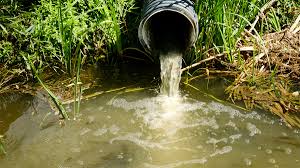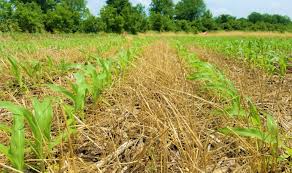Environmental degradation refers to the deterioration of the natural environment through the depletion of essential resources like air, water, and soil, the destruction of ecosystems, and the extinction of wildlife species.
It is defined as any change or disturbance in the environment that is considered harmful or undesirable.
The United Nations High-Level Threat Panel recognizes environmental degradation as one of the top ten global threats. In addition, the United Nations International Strategy for Disaster Reduction defines it as “the reduction of the capacity of the environment to meet social and ecological objectives and needs.”
Types and Effects of Environmental Degradation
Environmental degradation takes many forms. When natural habitats are destroyed or when natural resources are exhausted, the environment suffers. The World Resources 1998–1999 report highlights the link between environmental changes and human health.
It reveals that millions of preventable illnesses and premature deaths occur annually, especially in developing regions. An estimated 11 million children, or one in five, may not live to see their fifth birthday due to diseases like malaria, respiratory infections, and diarrhea—most of which are preventable and environment-related.
Read Also: 19 Medicinal Health Benefits Of Goats Rue (Galega officinalis)
Water Deterioration

Fresh water is a critical but limited resource, with only 2.5% of the Earth’s water being fresh and much of it locked in ice caps. Fresh water is vital for transporting nutrients and sustaining life. However, increased demand and poor management have led to significant depletion.
Current global freshwater usage includes:
1. 85% for irrigation in agriculture, parks, and golf courses
2. 6% for domestic purposes like bathing and gardening
3. 4% for industrial use such as processing and cooling in factories
One in three people worldwide face water scarcity, and nearly a fifth live in areas of physical water shortage. This challenge is intensified by rapid population growth, urbanization, and climate change.
Climate Change and Temperature
Climate change is altering water supply patterns globally. Rising global temperatures lead to increased evaporation, altered plant transpiration, and earlier snowmelts. These changes reduce soil moisture and affect flood and drought risks. Warmer winters reduce snowpacks, decreasing summer water supply especially in mountain regions.
Thermal expansion and glacier melting contribute to sea-level rise, leading to saltwater intrusion in coastal aquifers and reservoirs. Higher temperatures also promote bacterial growth in water and reduce oxygen levels, negatively affecting aquatic ecosystems and water quality.
Climate Change and Precipitation
Although global precipitation may increase, its distribution will remain uneven. Some regions may experience more rainfall, particularly in winter, while others become drier in summer. This uneven pattern affects flood and drought frequency, soil erosion, and water quality.
Changes in precipitation alter flood and drought timing, affect plant growth, and disrupt agricultural cycles. Drier conditions lower water tables, dry wetlands, and reduce groundwater recharge, leaving behind poor-quality water due to increased salinity and contamination.
Population Growth
The growing global population puts additional pressure on fresh water. Nearly one-fourth of the global population lives in areas where water use exceeds 20% of renewable supply. As population increases, water demand for domestic, agricultural, and industrial uses rises sharply.
Agriculture, the largest water consumer, contributes significantly to environmental degradation. Population growth has led to rapid urbanization, which in turn increases contamination and disease due to overcrowding and poor sanitation, particularly in developing countries where 79% of the global population resides.
Read Also: 19 Medicinal Health Benefits of Sweet Woodruff (Galium odoratum)
Impact of Agriculture

Agriculture depends heavily on soil moisture, which is directly influenced by precipitation and climate dynamics. In areas with reduced rainfall, irrigation becomes necessary, further depleting fresh water resources.
Irrigation can increase salinity and introduce nutrients that pollute water sources. Fertilizers and livestock waste enter groundwater systems, while meat production driven by increasing demand consumes vast water resources.
Water is used in:
1. Feeding livestock and keeping them hydrated
2. Processing meat and managing waste in slaughterhouses
3. Growing animal feed, which consumes a significant portion of global fresh water
As water is diverted from agriculture to urban areas, concerns grow over food security, rural livelihoods, and trade imbalances. Climate change may also lead to forced migration and displacement, especially in coastal areas affected by rising sea levels.
Water Management
Improving water management is essential to address water scarcity and environmental degradation. Existing systems, built based on historical climate patterns, may not be sufficient for future needs. Upgrades in design, operation, and planning are necessary.
Key water management strategies include:
1. Adapting infrastructure to changing hydrological conditions
2. Privatizing water systems to improve service quality
3. Conserving water through better resource management and reduced waste
4. Setting limits on overuse and pollution
Sustainable water management requires both short-term efficiency and long-term conservation to ensure availability for future generations.
Do you have any questions, suggestions, or contributions? If so, please feel free to use the comment box below to share your thoughts. We also encourage you to kindly share this information with others who might benefit from it. Since we can’t reach everyone at once, we truly appreciate your help in spreading the word. Thank you so much for your support and for sharing!

